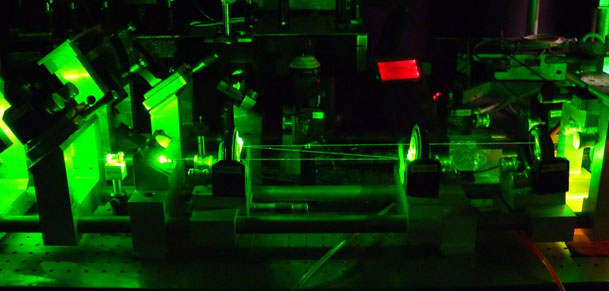Time-resolved Fluorescence Decays
T-Format TCSPC Instrument
Our study of orientational dynamics is aimed at understanding the motions of solute molecules in their solvent environment. The nature and time scale of molecular motions is changed dramatically when a molecule is placed in solution. One of the simplest approaches for probing solute-solvent interactions is to determine how simple molecular motions are altered by the solvent. Since optical spectroscopic methods are capable of measuring reorientational dynamics on the time scales that are relevant to solute-solvent interactions, we use time-resolved spectroscopy to probe reorientational motions. These techniques are being applied in two ways in our research. In one, we study orientational dynamics of peptides. In the second application, we have developed a new approach to studying rotational diffusion in solution, involving two-photon excitation. In these experiments, fluorescence is excited by absorption of two photons simultaneously, instead of just one.
Peptide Dynamics
Peptides are short chains of amino acids whose conformation is flexible. We use the orientational dynamics of an amino acid side chain to learn about internal motion in peptides as well as the overall rotational motion of the whole peptide. The range of peptide and protein motions that can be simulated by dynamical calculations with computers is expanding rapidly. Experimental probes of conformational motion are needed to understand protein and peptide dynamics and to test dynamical simulations.
We use fluorescence depolarization measurements to study the dynamics of simple peptides in solution. The goal of these experiments is to determine the time scales and amplitudes of internal and overall motions of peptides. An example of this work is our study of intramolecular dynamics in opioid peptides, including enkephalin. We have found that these peptides undergo a conformational change at low temperatures that leads to a freezing up of internal motion. Further experiments are planned to see what intramolecular interactions are important in this process.
